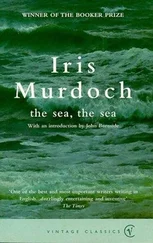Ildefonso Falcones - Cathedral of the Sea
Здесь есть возможность читать онлайн «Ildefonso Falcones - Cathedral of the Sea» весь текст электронной книги совершенно бесплатно (целиком полную версию без сокращений). В некоторых случаях можно слушать аудио, скачать через торрент в формате fb2 и присутствует краткое содержание. Жанр: Старинная литература, на английском языке. Описание произведения, (предисловие) а так же отзывы посетителей доступны на портале библиотеки ЛибКат.
- Название:Cathedral of the Sea
- Автор:
- Жанр:
- Год:неизвестен
- ISBN:нет данных
- Рейтинг книги:4 / 5. Голосов: 1
-
Избранное:Добавить в избранное
- Отзывы:
-
Ваша оценка:
- 80
- 1
- 2
- 3
- 4
- 5
Cathedral of the Sea: краткое содержание, описание и аннотация
Предлагаем к чтению аннотацию, описание, краткое содержание или предисловие (зависит от того, что написал сам автор книги «Cathedral of the Sea»). Если вы не нашли необходимую информацию о книге — напишите в комментариях, мы постараемся отыскать её.
Cathedral of the Sea — читать онлайн бесплатно полную книгу (весь текст) целиком
Ниже представлен текст книги, разбитый по страницам. Система сохранения места последней прочитанной страницы, позволяет с удобством читать онлайн бесплатно книгу «Cathedral of the Sea», без необходимости каждый раз заново искать на чём Вы остановились. Поставьте закладку, и сможете в любой момент перейти на страницу, на которой закончили чтение.
Интервал:
Закладка:
In 1367, after being accused of profaning a host and having been locked in the synagogue without food or water, three Jews were executed on the orders of infante Don Juan, King Pedro’s deputy.
Jews were strictly forbidden to leave their houses during the Christian Holy Week. They were also ordered to keep the doors and windows of their homes closed so that they could not see or interfere with the numerous processions. Even so, Easter saw an increase in the fears of the Christian fanatics, and accusations of the celebration of heretical rites also grew at a time of year that the Jews came to have just reason to fear.
Two main accusations were made against the Jews during Easter: the ritual murder of Christians, and especially children, in order to crucify and torture them, drink their blood, or eat their hearts; and the profanation of the host. Both of these were commonly seen as designed to re-create the pain and suffering of Christ believed in by the Catholics.
The first known accusation of the crucifixion of a Christian child comes from the Holy Roman Empire in Würzburg, Germany, in 1147. As was so often the case with accusations against the Jews, popular feeling led to similar charges quickly spreading throughout Europe. Only a year later, in 1148, the English Jews in the city of Norwich were accused of crucifying another Christian boy. From then on, accusations of ritual murder, usually during Easter and often involving crucifixion, became widespread: Gloucester, 1168; Fulda, 1235; Lincoln, 1255, Munich, 1286 ... Hatred of the Jews and popular credulity were so strong that in the fifteenth century an Italian Franciscan friar, Bernardino da Feltre, predicted that a Christian child was to be crucified: an event that actually happened in Trent, where the little boy Simon was found dead on a cross. The Catholic Church beatified Simon, but the friar went on “prophesying” further crucifixions, in Reggio, Bassano, and Mantua. Simon was a martyr of fanaticism rather than faith, but it was not until midway through the twentieth century that the Catholic Church finally annulled his beatification.
One occasion when the Barcelona host was summoned—although this took place in the year 1369, later than I have situated it in the book—was against the village of Creixell, when the local lord prevented the free passage and grazing of cattle headed for Barcelona, where by law the animals had to arrive alive. The seizure of animals was one of the main reasons why the host was called upon to defend the city’s privileges against other towns and feudal lords.
Santa Maria de la Mar is without doubt one of the most beautiful churches to be found anywhere. It may lack the monumentality of others built at the same time or later, but its interior is filled with the spirit with which Berenguer de Montagut sought to infuse it: the people’s church, built by the people of Barcelona for Barcelona, is like an airy Catalan farmhouse. It is austere, protected, and protecting, and the light of the Mediterranean sets it apart from any other church in the world.
According to the experts, the great virtue of Santa Maria is that it was built over an uninterrupted period of fifty-five years. This means it benefits from a unified architectural style, with few elements added on, making it the leading example of Catalan Gothic. As was usual at that time, and in order not to interrupt the religious services, Santa Maria was built on and around the former construction. Initially, the architect Bassegoda Amigó placed the original church on the corner of Calle Espaseria. He calculated that the new church had been built in front of the old one, farther to the north, with what nowadays is Calle Santa Maria between them. However, when a new presbytery and crypt were being built in 1966, the discovery of a Roman necropolis underneath Santa Maria led to a modification of Bassegoda’s original idea. His grandson, also an architect and expert on Santa Maria, asserts that the successive versions of Santa Maria were always built on the same spot, one on top of the other. The Roman cemetery is said to have been where the body of Santa Eulàlia, patron saint of Barcelona, was buried. As described in the novel, her remains were transferred by King Pedro from Santa Maria to the cathedral.
The statue of the Virgin of the Sea that figures in the novel is the one now on the high altar, and was previously part of the tympanum of the main doorway in Calle del Born.
Nothing is known of the bells of Santa Maria until 1714, when King Felipe the Fifth of Castille defeated the Catalans. The king imposed a special tax on church bells in Catalonia in reprisal for the way they were constantly rung to call Catalan patriots to sometent, that is, to take up arms to defend their land. It was not only the Castillians who were enraged by bells calling citizens to defend a city. Pedro the Ceremonious himself, after he had put down an uprising in Valencia, ordered that the leaders of the uprising be killed by forcing them to swallow molten metal from the Union bell that had rung to call the people of Valencia to battle.
Santa Maria occupied such a special place in Barcelona that King Pedro did choose to urge the citizens to aid him in his campaign against Sardinia from the square in front of it, rather than the Plaza del Blat outside the magistrate’s palace.
The humble bastaixos, the port workers who offered to carry blocks of stone to Santa Maria without payment, are the clearest example of the popular fervor that helped build the church. The parish accorded them many privileges, and even today their devotion to the cult of Mary can be seen in the bronze figures on the main doorway and reliefs in the presbytery or marble capitals, on all of which are portrayed figures of port workmen.
The Jew Hasdai Crescas existed. There was also a Bernat Estanyol, who was a captain of the Company of Almogavars. I deliberately chose the first of these two; the second is a simple coincidence. But it was my decision to make Crescas a moneylender, and the details of his life are my invention. In 1391, seven years after the official inauguration of Santa Maria (and more than a century before the Catholic monarchs ordered the expulsion of the Jews from their kingdoms), the Barcelona Jewry was burned down by the people. Its inhabitants were put to death, while those who managed to avoid death, by, for example, seeking refuge in a convent, were forced to convert to Christianity. The Barcelona Jewry was totally destroyed, and churches were built inside it, until King Juan, worried at the economic consequences for the royal coffers upon the disappearance of the Jews, attempted to coax them back to the city. He promised them tax exemptions until their community reached two hundred members, and annulled specific impositions such as having to give up their beds and other furniture whenever the royal court was visiting the city, or having to feed the lions and other wild animals kept by the sovereign. The Jews did not return, however, so that in 1397 the king conceded to Barcelona the right not to have a Jewry.
The grand inquisitor general Nicolau Eimerich took refuge with the pope in Avignon, but on the death of King Pedro returned to Catalonia and continued his attacks on the works of Ramon Llull. In 1393, King Juan banished him from Catalonia, and the inquisitor again sought refuge with the pope. However, that same year Eimerich returned to Seu d’Urgell, so that King Juan had to urge the bishop to expel him at once. Nicolau fled to Avignon a second time, but on the death of King Juan was granted permission by King Martin the Humane to spend the last years of his life in his native Girona, where he died at the age of eighty. The references to Eimerich’s assertions that torturing several times was merely a continuation of the first torture, and on the conditions in which prisoners should be held, are true.
Читать дальшеИнтервал:
Закладка:
Похожие книги на «Cathedral of the Sea»
Представляем Вашему вниманию похожие книги на «Cathedral of the Sea» списком для выбора. Мы отобрали схожую по названию и смыслу литературу в надежде предоставить читателям больше вариантов отыскать новые, интересные, ещё непрочитанные произведения.
Обсуждение, отзывы о книге «Cathedral of the Sea» и просто собственные мнения читателей. Оставьте ваши комментарии, напишите, что Вы думаете о произведении, его смысле или главных героях. Укажите что конкретно понравилось, а что нет, и почему Вы так считаете.










